Blockchain Integration in the Era of Industrial Metaverse
Abstract
1. Introduction
- Significant technical challenges still need to be addressed:
- ○
- Cybersecurity issues;
- ○
- Energy consumption of blockchain;
- ○
- Interoperability.
- Regulatory challenges protecting human rights:
- ○
- Privacy issues;
- ○
- Web 3.0’s copyright promises to support the creator economy by ensuring the fair use of assets;
- ○
- Enforceability of regulatory frameworks.
- Economic challenges for a successful metaverse:
- ○
- Stability of tokens, currencies, and blockchain systems;
- ○
- The high concentration of financial players and institutions in the metaverse.
- Ethical challenges for a human-centric metaverse:
- ○
- What ethical standards and limitations will govern this new cyber-physical metaverse, where identity will be a fluid concept and regulatory oversight will be weak?
- 5G technology opportunities:
- ○
- Immersion;
- ○
- Immediacy;
- ○
- Consistency.
- Blockchain-as-a-service and application programming interface (API) opportunities.
2. Historical Evolution of the Blockchain
2.1. Blockchain 1.0
- Enhanced network reliability is achieved by masking the identity of users or organizations, thus increasing the privacy of users.
- Transparent communication between the network participants is possible as long as the users satisfy the conditions of the consensus mechanism.
- Operation costs are reduced due to the use of a decentralized and distributed network versus the higher cost of conventional systems.
- For the validation of transactions, miners are obliged to work simultaneously in order to solve a cryptographic puzzle and adhere to the principles of the Proof of Work (PoW) consensus mechanism. By extension, multiple computing resources and increased computational time are required. Therefore, PoW is not efficient enough.
- Due to the increased computational time and computational resources required, delays in the execution of transactions are induced in the system, which leads to a less-than-optimal user experience.
- Security risks are still present, as there might be corrupt miners within the network who try to corrupt the ledger in an attempt to extract additional revenue/rewards.
2.2. Blockchain 2.0
- The addition of Ethereum to Blockchain 2.0 has extended its usability for financial organizations as a result of its enhanced security and privacy.
- The level of transparency in the communication between users has been enhanced by the integration of smart contracts.
- By integrating smart contracts, an increased data rate for digital transactions can be achieved.
2.3. Blockchain 3.0
2.3.1. Proof of Work (PoW)
2.3.2. Proof of Stake (PoS)
2.3.3. Delegated Proof of Stake (DPoS)
2.3.4. Proof of Activity (PoA)
2.3.5. Proof of Authority (PoA)
2.3.6. Proof of Burn (PoB)
2.3.7. Proof of Capacity/Proof of Space (PoC/PoSpace)
2.3.8. Proof of Elapsed Time (PoET)
2.3.9. Proof of History (PoH)
2.3.10. Proof of Importance (PoI)
2.4. Blockchain 4.0
3. Beyond the Current Implementations—Blockchain 5.0
- User digital transactions are stored in a single system in order to ensure data confidentiality for information related to health care or governance.
- Features of advanced digital technologies, such as AI, are exploited for the creation of secure and reliable smart contracts in the network.
- Improvement of industrial performance with the implementation of complex projects with Blockchain 5.0.
3.1. Blockchain and Education
- Reduction of costly academic bureaucracy;
- Laggs in technology adoption;
- Democratization and automation of higher education.
3.2. Blockchain and Digital Twin
3.3. Data Management and Cybersecurity
4. Blockchain in the Era of Society 5.0
5. Blockchain Integration in Metaverse
- Investing in financial products and services now has a lower barrier to entry.
- Assisting individuals in monetizing their work and experiences (such as gaming) in order to compensate for income losses due to inflation and the pandemic.
- Reducing costs and increasing transaction efficiency by eliminating middlemen in procedures such as money transfers.
- Creating interest from a diverse range of demographic groups outside of the traditional financial sector and presenting novel concepts and opportunities.
- Managing community-involved and connected projects.
5.1. Technical Framework for the Blockchain in Metaverse
5.1.1. Data Acquisition
Challenges of Data Acquisition in the Metaverse
Blockchain Contribution
Challenge/Limitation
5.1.2. Data Storage
Challenges of Data Storage in the Metaverse
Blockchain Contribution
Challenge/Limitation
5.1.3. Data Sharing
Challenges of Data Sharing in the Metaverse
Blockchain Contribution
Challenge/Limitation
5.1.4. Data Interoperability
Challenges of Data Interoperability in Metaverse
Blockchain Contribution
Challenge/Limitation
5.1.5. Data Privacy Preservation
Privacy Preservation in the Metaverse and the Corresponding Challenges
Blockchain Contribution
Challenge/Limitation
5.2. Blockchain Case Studies in Metaverse
5.3. Regulatory Challenges Protecting Human Rights in Metaverse
- (1)
- Privacy regulations;
- (2)
- Copyright laws and regulations;
- (3)
- Mechanisms to enforce regulatory regimes.
5.4. Comparison of Current Paper Versus the State of Knowledge
6. Concluding Remarks and Outlook
Author Contributions
Funding
Institutional Review Board Statement
Informed Consent Statement
Data Availability Statement
Conflicts of Interest
Nomenclature
| AI | Artificial Intelligence |
| AR | Augmented Reality |
| DApps | Digital Applications |
| DLT | Digital Ledger Technology |
| DOS | Denial Of Service |
| DPoS | Delegated Proof of Stake |
| HCI | Human-Computer Interaction |
| HEI | Higher Education |
| IoT | Internet of things |
| NFT | Non-Fungible Token |
| NSA | National Security Agency |
| PII | Personally Identifiable Information |
| PoA | Proof of Activity |
| PoA | Proof of Authority |
| PoB | Proof of Burn |
| PoC | Proof of Capability |
| PoET | Proof of Elapsed Time |
| PoH | Proof of History |
| PoI | Proof of Importance |
| PoS | Proof of Stake |
| PoSpace | Proof of Space |
| PoW | Proof of Work |
| RSA | Rivest Shamir Adleman |
| SDG | Sustainable Development Goals |
| SGX | Software Guard Extensions |
| SHA | Secure Hash Algorithm |
| VR | Virtual Reality |
References
- Politou, E.; Casino, F.; Alepis, E.; Patsakis, C. Blockchain mutability: Challenges and proposed solutions. IEEE Trans. Emerg. Top. Comput. 2019, 9, 1972–1986. [Google Scholar] [CrossRef]
- Helliar, V.C.; Crawford, L.; Rocca, L.; Teodori, C.; Veneziani, M. Permissionless and permissioned blockchain diffusion. Int. J. Inf. Manag. 2020, 54, 102136. [Google Scholar] [CrossRef]
- Peng, L.; Feng, W.; Yan, Z.; Li, Y.; Zhou, X.; Shimizu, S. Privacy preservation in permissionless blockchain: A survey. Digit. Commun. Netw. 2021, 7, 295–307. [Google Scholar] [CrossRef]
- Akram, S.V.; Malik, P.K.; Singh, R.; Anita, G.; Tanwar, S. Adoption of blockchain technology in various realms: Opportunities and challenges. Secur. Priv. 2020, 3, 109. [Google Scholar] [CrossRef]
- Bao, Q.; Li, B.; Hu, T.; Sun, X. A survey of blockchain consensus safety and security: State-of-the-art, challenges, and future work. J. Syst. Softw. 2023, 196, 111555. [Google Scholar] [CrossRef]
- Nakamoto, S. Bitcoin: A peer-to-peer electronic cash system. Decentralized Bus. Rev. 2008, 21260. [Google Scholar]
- Xu, M.; Chen, X.; Kou, G. A systematic review of blockchain. Financ. Innov. 2019, 5, 27. [Google Scholar] [CrossRef]
- Badruddoja, S.; Dantu, R.; He, Y.; Upadhayay, K.; Thompson, M. Making smart contracts smarter. In Proceedings of the 2021 IEEE International Conference on Blockchain and Cryptocurrency (ICBC), Sydney, Australia, 3–6 May 2021; pp. 1–3. [Google Scholar] [CrossRef]
- Saini, K.; Roy, A.; Chelliah, P.R.; Patel, T. Blockchain 2.O: A smart contract. In Proceedings of the International Conference on Computational Performance Evaluation (ComPE), Shillong, India, 1–3 December 2021; pp. 524–528. [Google Scholar] [CrossRef]
- Ethereum Official Website. Available online: https://ethereum.org/en/ (accessed on 20 November 2022).
- Khandelwal, P.; Johari, R.; Gaur, V.; Vashisth, D. BlockChain technology based smart contract agreement on REMIX IDE. In Proceedings of the 8th International Conference on Signal Processing and Integrated Networks (SPIN), Noida, India, 26–27 August 2021; pp. 938–942. [Google Scholar] [CrossRef]
- Raphael, J.; Steele, A. The Impact of Blockchain Technology on Audit 2020. Available online: https://www2.deloitte.com/us/en/pages/audit/articles/impact-of-blockchain-in-accounting.html (accessed on 18 November 2022).
- Consensus Mechanisms in Blockchain: A Beginner’s Guide. Crypto.com. Available online: https://crypto.com/university/consensus-mechanisms-in-blockchain (accessed on 20 November 2022).
- Hafid, A.; Hafid, A.S.; Samih, M. Scaling Blockchains: A Comprehensive Survey. IEEE Access 2020, 8, 125244–125262. [Google Scholar] [CrossRef]
- Zhang, P.; Zhou, M.; Zhen, J.; Zhang, J. Enhancing scalability of trusted blockchains through optimal sharding. In Proceedings of the 2021 IEEE International Conference on Smart Data Services (SMDS), Chicago, IL, USA, 5–10 September 2021; pp. 226–233. [Google Scholar] [CrossRef]
- He, J.; Wang, G.; Zhang, G.; Zhang, J. Consensus mechanism design based on structured directed acyclic graphs. Blockchain Res. Appl. 2021, 2, 100011. [Google Scholar] [CrossRef]
- Zhang, Q.; Jiang, X.; Zheng, Y. Blockchain adoption and gray markets in a global supply chain. Omega 2023, 115, 102785. [Google Scholar] [CrossRef]
- Mourtzis, D. Design and Operation of Production Networks for Mass Personalization in the Era of Cloud Technology; Elsevier: Amsterdam, The Netherlands, 2022; pp. 1–393. [Google Scholar] [CrossRef]
- Hassan, M.U.; Rehmani, M.H.; Chen, J. Privacy preservation in blockchain based IoT systems: Integration issues, prospects, challenges, and future research directions. Future Gener. Comput. Syst. 2019, 97, 512–529. [Google Scholar] [CrossRef]
- Casino, F.; Dasaklis, T.K.; Patsakis, C. A systematic literature review of blockchain-based applications: Current status, classification and open issues. Telemat. Inform. 2019, 36, 55–81. [Google Scholar] [CrossRef]
- Malik, S.; Dedeoglu, V.; Kanhere, S.S.; Jurdak, R. TrustChain: Trust management in blockchain and IoT supported supply chains. In Proceedings of the 2019 IEEE International Conference on Blockchain (Blockchain), Atlanta, GA, USA, 14–17 July 2019; pp. 184–193. [Google Scholar] [CrossRef]
- Rahman, M.S.; Chamikara, M.; Khalil, I.; Bouras, A. Blockchain-of-blockchains: An interoperable blockchain platform for ensuring IoT data integrity in smart city. J. Ind. Inf. Integr. 2022, 30, 100408. [Google Scholar] [CrossRef]
- Asaithambi, S.; Ravi, L.; Kotb, H.; Milyani, A.H.; Azhari, A.A.; Nallusamy, S.; Varadarajan, V.; Vairavasundaram, S. An Energy-Efficient and Blockchain-Integrated Software Defined Network for the Industrial Internet of Things. Sensors 2022, 22, 7917. [Google Scholar] [CrossRef]
- Hinsdale, J. Cryptocurrency’s Dirty Secret: Energy Consumption; State of the Planet; Columbia Climate School: New York, NY, USA, 2022. [Google Scholar]
- Saingre, D.; Ledoux, T.; Menaud, J.M. Measuring performances and footprint of blockchains with BCTMark: A case study on Ethereum smart contracts energy consumption. Clust. Comput. 2022, 25, 2819–2837. [Google Scholar] [CrossRef]
- Is This the End of Crypto? The Economist. Available online: https://www.economist.com/leaders/2022/11/17/is-this-the-end-of-crypto (accessed on 15 November 2022).
- Start Your Crypto Journey with a Reliable Partner. Available online: https://relictum.pro/ (accessed on 15 November 2022).
- Shen, P.; Li, S.; Huang, M.; Gao, H.; Li, L.; Li, J.; Lei, H. A survey on safety regulation technology of blockchain application and blockchain ecology. In Proceedings of the 2022 IEEE International Conference on Blockchain (Blockchain), Virtual Conference, 2–5 May 2022; pp. 494–499. [Google Scholar] [CrossRef]
- Haber, S.; Stornetta, W.S. How to timestamp a digital document. J. Cryptogr. 1991, 3, 99–111. [Google Scholar] [CrossRef]
- Cheng, Y.; Shaoqin, H. Research on blockchain technology in cryptographic exploration. In Proceedings of the 2020 International Conference on Big Data & Artificial Intelligence & Software Engineering (ICBASE), Bangkok, Thailand, 30 October–1 November 2020; pp. 120–123. [Google Scholar] [CrossRef]
- Touloupou, M.; Christodoulou, K.; Inglezakis, A.; Iosif, E.; Themistocleous, M. Towards a framework for understanding the performance of blockchains. In Proceedings of the 2021 3rd Conference on Blockchain Research & Applications for Innovative Networks and Services (BRAINS), Paris, France, 27–30 September 2021; pp. 47–48. [Google Scholar] [CrossRef]
- Li, Z.; Tian, Z.; Wang, L.; Zhong, Y.R. Chapter 12—Blockchain-enabled product lifecycle management. In Design and Operation of Production Networks for Mass Personalization in the Era of Cloud Technology; Mourtzis, D., Ed.; Elsevier: Amsterdam, The Netherlands, 2022; pp. 349–379. [Google Scholar] [CrossRef]
- Chen, G.; Xu, B.; Lu, M.; Chen, N.S. Exploring blockchain technology and its potential applications for education. Smart Learn. Environ. 2018, 5, 1. [Google Scholar] [CrossRef]
- Hasankhani, A.; Hakimi, S.M.; Miadreza, S.; Asadolahi, H. Blockchain technology in the future smart grids: A comprehensive review and frameworks. Int. J. Electr. Power Energy Syst. 2021, 129, 106811. [Google Scholar] [CrossRef]
- Krishna, B.; Rajkumar, P.; Velde, V. Integration of blockchain technology for security and privacy in internet of things. Mater. Today Proc. 2021, 196–209. [Google Scholar] [CrossRef]
- Majeed, U.; Khan, L.U.; Yaqoob, I.; Kazmi, S.M.A.; Salah, K.; Hong, C.S. Blockchain for IoT-based smart cities: Recent advances, requirements, and future challenges. J. Netw. Comput. Appl. 2021, 181, 103007. [Google Scholar] [CrossRef]
- Sanka, A.I.; Irfan, M.; Huang, I.; Cheung, R.C.C. A survey of breakthrough in blockchain technology: Adoptions, applications, challenges and future research. Comput. Commun. 2021, 169, 179–201. [Google Scholar] [CrossRef]
- Aldowah, H.; Al-Samarraie, H.; Wan Mohamad, F. Educational data mining and learning analytics for 21st century higher education: A review and synthesis. Telemat. Inform. 2019, 37, 13–49. [Google Scholar] [CrossRef]
- Chapman, D.; Samira, L. Degrees of integrity. The threat of corruption in higher education. Stud. High. Educ. 2016, 41, 247–268. [Google Scholar] [CrossRef]
- Yakovenko, I.; Kulumbetova, L.; Subbotina, I.; Zhanibekova, G.; Bizhanova, K. The Blockchain technology as a catalyst for digital transformation of education. Int. J. Mech. Eng. Technol. (IJMET) 2019, 10, 886–897. [Google Scholar]
- Zou, Y.; Meng, T.; Zhang, P.; Zhang, W.; Li, H. Focus on blockchain: A comprehensive survey on academic and application. IEEE Access 2020, 8, 187182–187201. [Google Scholar] [CrossRef]
- 4 Ways Blockchain Will Transform Higher Education, Gartner. Available online: https://www.gartner.com/smarterwithgartner/4-ways-blockchain-will-transform-higher-education (accessed on 25 November 2022).
- Ziyi Li, Z.; Joseph, L.K.; Yu, J.; Gasevic, D. Blockchain-based solutions for education credentialing system: Comparison and implications for future development. In Proceedings of the 2022 IEEE International Conference on Blockchain (Blockchain), Virtual Conference, 2–5 May 2022; pp. 79–86. [Google Scholar] [CrossRef]
- Zhang, L.; Ma, Z.; Ji, X.; Wang, C. Blockchain: Application in the system of teaching informatization management of higher education. In Proceedings of the 2020 3rd International Conference on Smart BlockChain (SmartBlock), Zhengzhou, China, 23–25 October 2020; pp. 185–190. [Google Scholar] [CrossRef]
- Mourtzis, D.; Angelopoulos, J.; Panopoulos, N. Blockchain in engineering education: The teaching factory paradigm. In Proceedings of the Conference on Learning Factories (CLF), Graz, Austria, 1–2 July 2021. [Google Scholar] [CrossRef]
- Mourtzis, D. Simulation in the design and operation of manufacturing systems: State of the art and new trends. Int. J. Prod. Res. 2020, 58, 1927–1949. [Google Scholar] [CrossRef]
- Sasikumar, A.; Subramaniyaswamy, V.; Ketan, K.; Indragandhi, V.; Logesh, R.; Ganeshsree, S.; Ajith, A. Blockchain-based trust mechanism for digital twin empowered Industrial Internet of Things. Future Gener. Comput. Syst. 2023, 141, 16–27. [Google Scholar] [CrossRef]
- Singh, S.K.; Yang, L.T.; Park, J.H. FusionFedBlock: Fusion of blockchain and federated learning to preserve privacy in industry 5.0. Inf. Fusion 2023, 90, 233–240. [Google Scholar] [CrossRef]
- Ivanov, D.; Dolgui, A. OR-methods for coping with the ripple effect in supply chains during COVID-19 pandemic: Managerial insights and research implications. Int. J. Prod. Econ. 2021, 232, 107921. [Google Scholar] [CrossRef]
- Dolgui, A.; Ivanov, D. Ripple effect and supply chain disruption management: New trends and research directions. Int. J. Prod. Res. 2021, 59, 102–109. [Google Scholar] [CrossRef]
- Hader, M.; Tchoffa, D.; Mhamedi, A.; Ghodous, P.; Dolgui, A.; Abouabdellah, A. Applying integrated Blockchain and Big Data technologies to improve supply chain traceability and information sharing in the textile sector. J. Ind. Inf. Integr. 2022, 28, 100345. [Google Scholar] [CrossRef]
- Klöckner, M.; Schmidt, C.G.; Wagner, S.M. Building resilient post-pandemic supply chains through digital transformation. In Supply Chain Resilience; Springer Series in Supply Chain Management; Khan, O., Huth, M., Zsidisin, G.A., Henke, M., Eds.; Springer: Cham, Switzerland, 2023; Volume 21. [Google Scholar] [CrossRef]
- Huang, S.; Wang, G.; Yan, Y.; Fang, X. Blockchain-based data management for digital twin of product. J. Manuf. Syst. 2020, 54, 361–371. [Google Scholar] [CrossRef]
- Chen, Y.; Chen, H.; Zhang, Y.; Han, M.; Siddula, M.; Cai, Z. A survey on blockchain systems: Attacks, defenses, and privacy preservation. High-Confid. Comput. 2022, 2, 100048. [Google Scholar] [CrossRef]
- Christen, P.; Schnell, R.; Ranbaduge, T.; Vidanage, A. A critique and attack on blockchain-based privacy-preserving record linkage. Inf. Syst. 2021, 108, 101930. [Google Scholar] [CrossRef]
- Homoliak, I.; Venugopalan, S.; Reijsbergen, D.; Hum, Q.; Schumi, R.; Szalachowski, P. The Security Reference Architecture for Blockchains: Toward a Standardized Model for Studying Vulnerabilities, Threats, and Defenses. IEEE Commun. Surv. Tutor. 2021, 23, 341–390. [Google Scholar] [CrossRef]
- Nair, M.M.; Tyagi, A.K.; Sreenath, N. The future with industry 4.0 at the core of society 5.0: Open issues, future opportunities and challenges. In Proceedings of the 2021 International Conference on Computer Communication and Informatics (ICCCI), Coimbatore, India, 27–29 January 2021; pp. 1–7. [Google Scholar] [CrossRef]
- Yang, Y.; Zhao, Y.; Huang, H.; Xiong, Z.; Kang, Z.; Zheng, Z. Fusing Blockchain and AI With Metaverse: A Survey. IEEE Open J. Comput. Soc. 2022, 3, 122–136. [Google Scholar] [CrossRef]
- Cacciagrano, D.; Corradini, F.; Mostarda, L. Blockchain and IoT integration for society 5.0. In Society 5.0; Communications in Computer and Information, Science; Gerber, A., Hinkelmann, K., Eds.; Springer: Cham, Switzerland, 2021; Volume 1477. [Google Scholar] [CrossRef]
- Cha, H.-S.; Im, C.-H. Performance enhancement of facial electromyogram-based facial-expression recognition for social virtual reality applications using linear discriminant analysis adaptation. Virtual Real. 2022, 26, 385–398. [Google Scholar] [CrossRef]
- Wang, F.-Y.; Qin, R.; Wang, X.; Hu, B. Metasocieties in metaverse: Metaeconomics and metamanagement for metaenterprises and metacities. IEEE Trans. Comput. Soc. Syst. 2022, 9, 2–7. [Google Scholar] [CrossRef]
- Xi, Ν.; Chen, J.; Gama, F.; Riar, M.; Hamari, J. The challenges of entering the metaverse: An experiment on the effect of extended reality on workload. Inf. Syst. Front. 2022, 1–22. [Google Scholar] [CrossRef]
- Jovanovic, A.; Milosavljevic, A. Vortex metaverse platform for gamified collaborative learning. Electronics 2022, 11, 317. [Google Scholar] [CrossRef]
- Duan, H.; Li, J.; Fan, S.; Lin, Z.; Wu, X.; Cai, W. Metaverse for social good: A university campus prototype. In Proceedings of the 29th ACM International Conference on Multimedia, Virtual Conference, 20–24 October 2021; pp. 153–161. [Google Scholar]
- Tao, H.; Bhuiyan, M.Z.A.; Abdalla, A.N.; Hassan, M.M.; Zain, J.M.; Hayajneh, T. Secured data collection with hardware-based ciphers for IoT-based healthcare. IEEE Internet Things J. 2018, 6, 410–420. [Google Scholar] [CrossRef]
- Shiau, W.-L.; Huang, L.-C. Scale development for analyzing the fit of real and virtual world integration: An example of pokemon go. Inf. Technol. People 2022. [Google Scholar] [CrossRef]
- Xu, C.; Qu, Y.; Luan, T.H.; Eklund, P.W.; Xiang, Y.; Gao, L. A lightweight and attack-proof bidirectional blockchain paradigm for internet of things. IEEE Internet Things J. 2022, 9, 4371–4384. [Google Scholar] [CrossRef]
- Bouraga, S. A taxonomy of blockchain consensus protocols: A survey and classification framework. Expert Syst. Appl. 2021, 168, 114384. [Google Scholar] [CrossRef]
- Guo, J.; Ding, X.; Wu, W. Reliable traffic monitoring mechanisms based on blockchain in vehicular networks. IEEE Trans. Reliab. 2021, 71, 1219–1229. [Google Scholar] [CrossRef]
- Bian, Y.; Leng, J.; Zhao, J.L. Demystifying metaverse as a new paradigm of enterprise digitization. Int. Conf. Big Data 2021, 12988, 109–119. [Google Scholar] [CrossRef]
- Alrubei, S.M.; Ball, E.A.; Rigelsford, J.M.; Willis, C.A. Latency and performance analyses of real-world wireless IoT-blockchain application. IEEE Sens. J. 2020, 20, 7372–7383. [Google Scholar] [CrossRef]
- Chen, L.; Fu, Q.; Mu, Y.; Zeng, L.; Rezaeibagha, F.; Hwang, M.-S. Blockchain-based random auditor committee for integrity verification. Future Gener. Comput. Syst. 2022, 131, 183–193. [Google Scholar] [CrossRef]
- Wang, X.; Liu, X.; Cheng, C.-T.; Deng, L.; Chen, X.; Xiao, F. A joint user scheduling and trajectory planning data collection strategy for the UAV-assisted WSN. IEEE Commun. Lett. 2021, 25, 2333–2337. [Google Scholar] [CrossRef]
- Kiong, L.V. Metaverse Made Easy: A Beginner’s Guide to the Metaverse: Everything you Need to Know About Metaverse, NFT and GameFi; Independently Published: Chicago, IL, USA, 2022. [Google Scholar]
- Liang, W.; Fan, Y.; Li, K.-C.; Zhang, D.; Gaudiot, J.-L. Secure data storage and recovery in industrial blockchain network environments. IEEE Trans. Ind. Inform. 2020, 16, 6543–6552. [Google Scholar] [CrossRef]
- Jeon, H.-j.; Youn, H.-c.; Ko, S.-m.; Kim, T.-h. Blockchain and AI meet in the metaverse. Adv. Converg. Blockchain Artif. Intell. 2022, 73, 1–94. [Google Scholar] [CrossRef]
- Xie, J.; Yu, F.R.; Huang, T.; Xie, R.; Liu, J.; Liu, Y. A survey on the scalability of blockchain systems. IEEE Netw. 2019, 33, 166–173. [Google Scholar] [CrossRef]
- Kraus, S.; Kanbach, D.K.; Krysta, P.M.; Steinhoff, M.M.; Tomini, N. Facebook and the creation of the metaverse: Radical business model innovation or incremental transformation? Int. J. Entrep. Behav. Res. 2022, 28, 52–57. [Google Scholar] [CrossRef]
- Yu, K.; Tan, L.; Aloqaily, M.; Yang, H.; Jararweh, Y. Blockchain enhanced data sharing with traceable and direct revocation in IIoT. IEEE Trans. Ind. Inform. 2021, 17, 7669–7678. [Google Scholar] [CrossRef]
- Egliston, B.; Carter, M. Critical questions for facebook’s virtual reality: Data, power and the metaverse. Internet Policy Rev. 2021, 10, 1–23. [Google Scholar] [CrossRef]
- Ali, O.; Jaradat, A.; Kulakli, A.; Abuhalimeh, A. A comparative study: Blockchain technology utilization benefits, challenges and functionalities. IEEE Access 2021, 9, 12730–12749. [Google Scholar] [CrossRef]
- Mourtzis, D.; Panopoulos, N.; Angelopoulos, J.; Wang, B.; Wang, L. Human centric platforms for personalized value creation in metaverse. J. Manuf. Syst. 2022, 65, 653–659. [Google Scholar] [CrossRef]
- Jabbar, R.; Fetais, N.; Krichen, M.; Barkaoui, K. Blockchain technology for healthcare: Enhancing shared electronic health record interoperability and integrity. In Proceedings of the IEEE International Conference on Informatics, IoT, and Enabling Technologies (ICIoT), Doha, Qatar, 2–5 February 2020; pp. 310–317. [Google Scholar] [CrossRef]
- Wibowo, S.; Sandikapura, T. Improving data security, interoperability, and veracity using blockchain for one data governance, case study of local tax big data. Int. Conf. ICT Smart Soc. (ICISS) 2019, 7, 1–6. [Google Scholar] [CrossRef]
- Hughes, I. The metaverse: Is it the future? ITNOW 2022, 64, 22–23. [Google Scholar] [CrossRef]
- Kumar, P.; Kumar, R.; Srivastava, G.; Gupta, G.P.; Tripathi, R.; Gadekallu, T.R.; Xiong, N.N. PPSF: A privacy-preserving and secure framework using blockchain-based machine-learning for IoT-driven smart cities. IEEE Trans. Netw. Sci. Eng. 2021, 8, 2326–2341. [Google Scholar] [CrossRef]
- Bushnell, M. Global Capital Markets and Cryptocurrency: Exploring the International Political Economy of Blockchain Ecosystems and Metaverse Development. Cryptopedia Staff., 2022, Illuvium (ILV): A Decentralized Ethereum RPG. 2022. Available online: https://www.gemini.com/cryptopedia/illuvium-crypto-rpg-blockchain-game-ilv-token (accessed on 26 December 2022).
- Doku, R.; Rawat, D.B.; Liu, C. On the Blockchain-Based Decentralized Data Sharing for Event Based Encryption to Combat Adversarial Attacks. IEEE Trans. Netw. Sci. Eng. 2021, 8, 1033–1043. [Google Scholar] [CrossRef]
- Liu, L.; Feng, J.; Pei, Q.; Chen, C.; Ming, Y.; Shang, B.; Dong, M. Blockchain-enabled Secure Data Sharing Scheme in Mobile-edge Computing: An Asynchronous Advantage Actor-critic Learning Approach. IEEE Internet Things J. 2020, 8, 2342–2353. [Google Scholar] [CrossRef]
- Chen, X.; Zhang, K.; Liang, X.; Qiu, W.; Zhang, Z.; Tu, D. Hyperbsa: A High-performance Consortium Blockchain Storage Architecture for Massive Data. IEEE Access 2020, 8, 178402–178413. [Google Scholar] [CrossRef]
- Dwivedi, S.K.; Amin, R.; Vollala, S. Blockchain-based Secured Ipfsenable Event Storage Technique with Authentication Protocol in VANET. IEEE/CAA J. Autom. Sin. 2021, 8, 1913–1922. [Google Scholar] [CrossRef]
- Ben Sasson, E.; Chiesa, A.; Garman, C.; Green, M.; Miers, I.; Tromer, E.; Virza, M. Zerocash: Decentralized anonymous payments from bitcoin. In Proceedings of the 2014 IEEE Symposium on Security and Privacy, Washington, DC, USA, 18–21 May 2014; pp. 459–474. [Google Scholar] [CrossRef]
- Miehle, D.; Meyer, M.M.; Luckow, A.; Bruegge, B.; Essig, M. Toward a decentralized marketplace for self-maintaining machines. In Proceedings of the 2019 IEEE International Conference on Blockchain (Blockchain), Seoul, Korea, 14–17 May 2019; pp. 431–438. [Google Scholar] [CrossRef]
- Seitz, A.; Henze, D.; Miehle, D.; Bruegge, B.; Nickles, J.; Sauer, M. Fog computing as enabler for blockchain-based IIOT app marketplaces—A case study. In Proceedings of the 2018 5th International Conference on Internet of Things: Systems, Management and Security, Valencia, Spain, 15–18 October 2018; pp. 182–188. [Google Scholar] [CrossRef]
- Dohler, M.; Franzese, G. Top Four Blockchain and Metaverse Challenges and Opportunities for Telco, 2022, Ericsson Blog. Available online: https://www.ericsson.com/en/blog/2022/10/metaverse-challenges-and-opportunities (accessed on 27 December 2022).
- Jelinek, T.; Wallach, W.; Kerimi, D. Coordinating Committee for The Governance of Artificial Intelligence; G20 Insights; Global Solutions Initiative Foundation: Berlin, Germany, 2020. [Google Scholar]
- Ning, H.; Wang, H.; Lin, Y.; Wang, W.; Dhelim, S.; Farha, F.; Ding, J.; Daneshmand, M. A survey on metaverse: The state-of-the-art, technologies, applications, and challenges. arXiv 2021, arXiv:2111.09673. [Google Scholar]
- Lee, L.H.; Braud, T.; Zhou, P.; Wang, L.; Xu, D.; Lin, Z.; Kumar, A.; Bermejo, C.; Hui, P. All one needs to know about metaverse: A complete survey on technological singularity, virtual ecosystem, and research agenda. arXiv 2021, arXiv:2110.05352. [Google Scholar]
- Mystakidis, S. Metaverse. Encyclopedia 2022, 2, 486–497. [Google Scholar] [CrossRef]
- Park, S.-M.; Kim, Y.-G. A metaverse: Taxonomy, components, applications, and open challenges. IEEE Access 2022, 10, 4209–4251. [Google Scholar] [CrossRef]
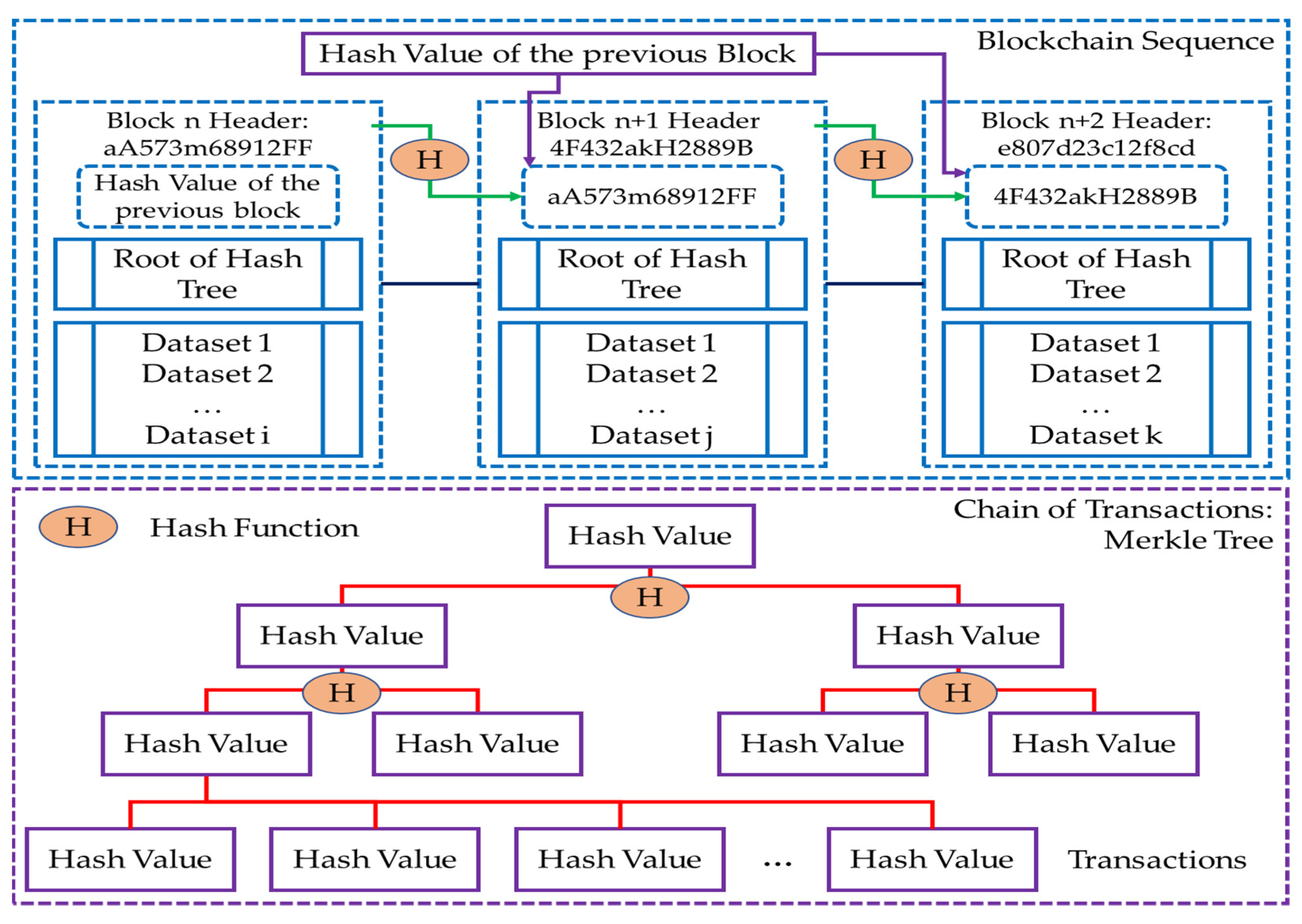
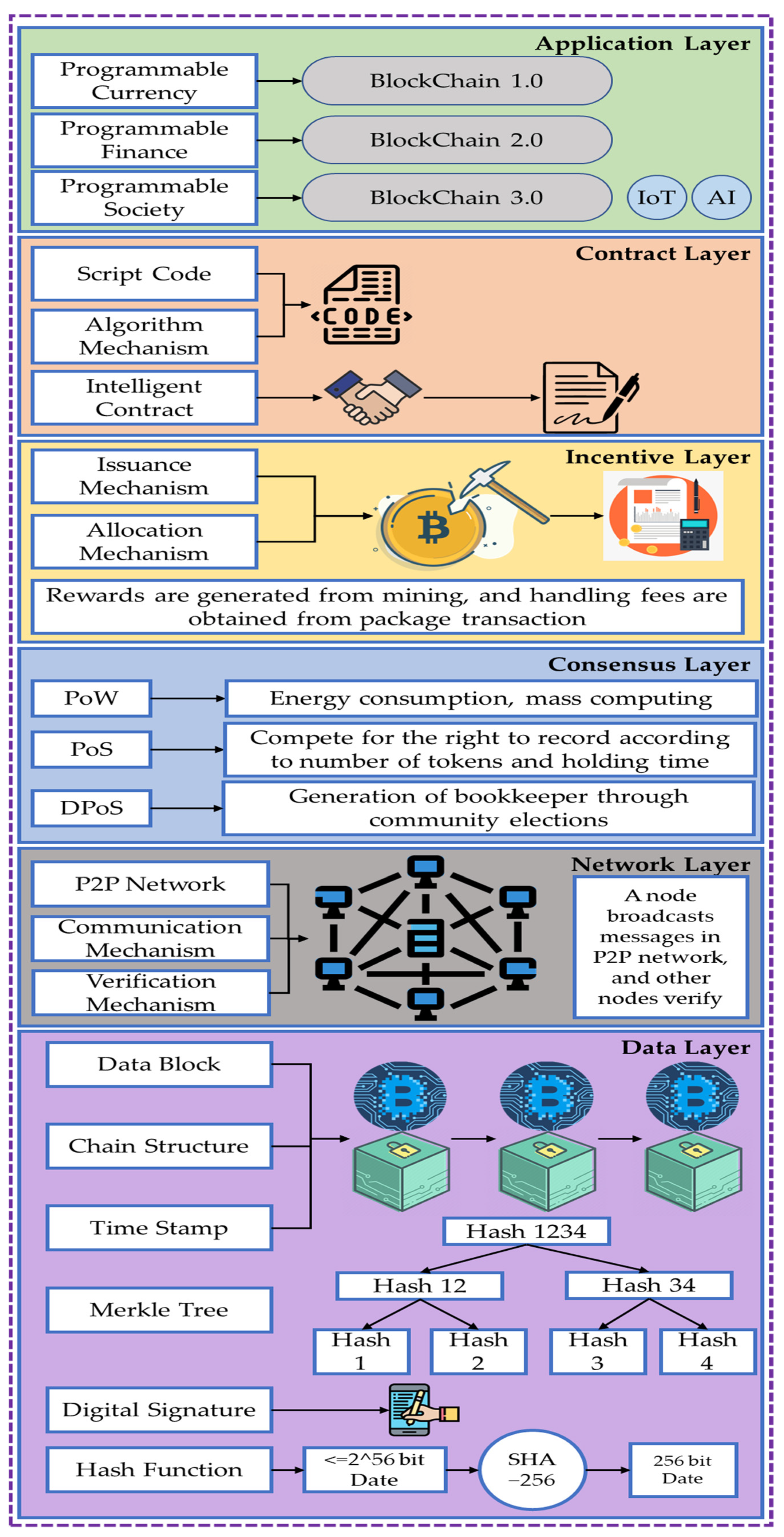
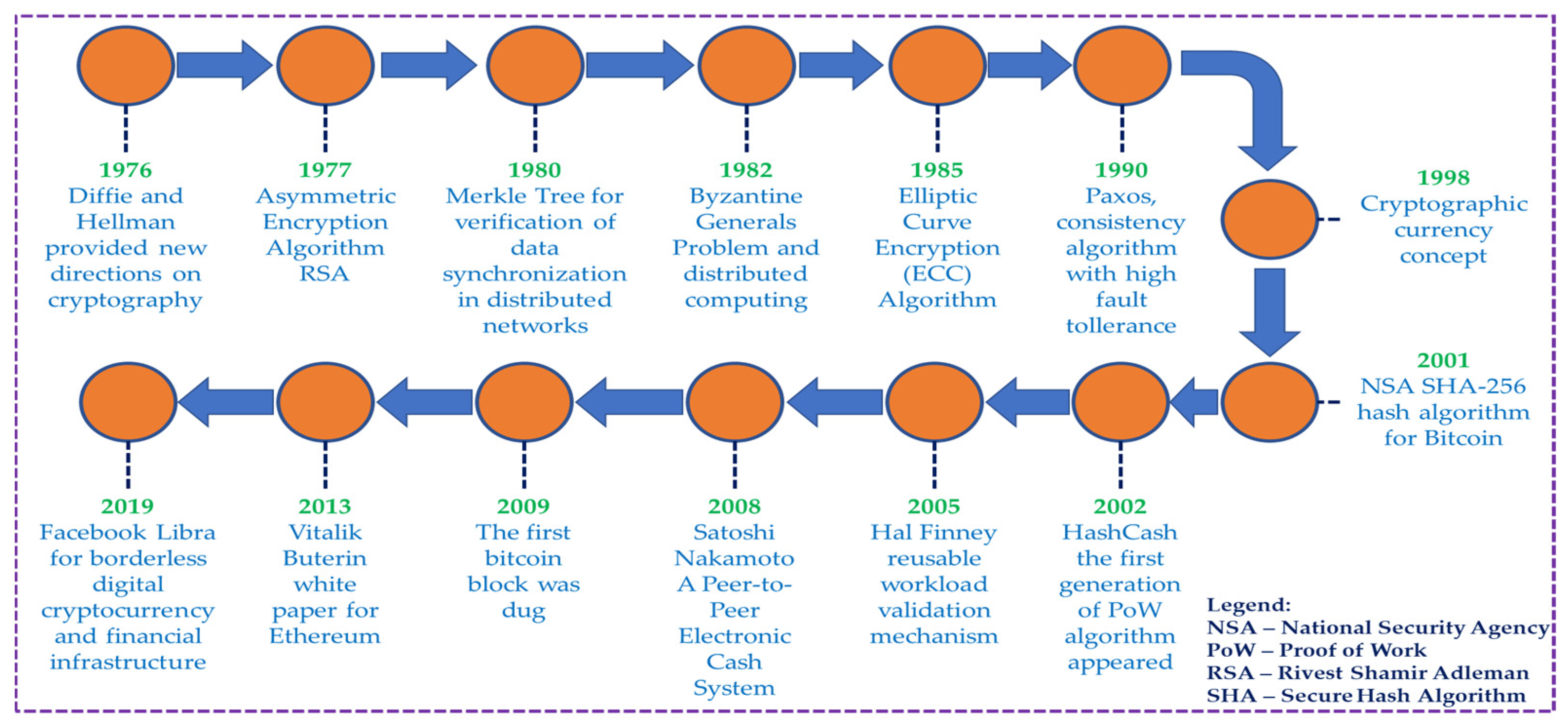
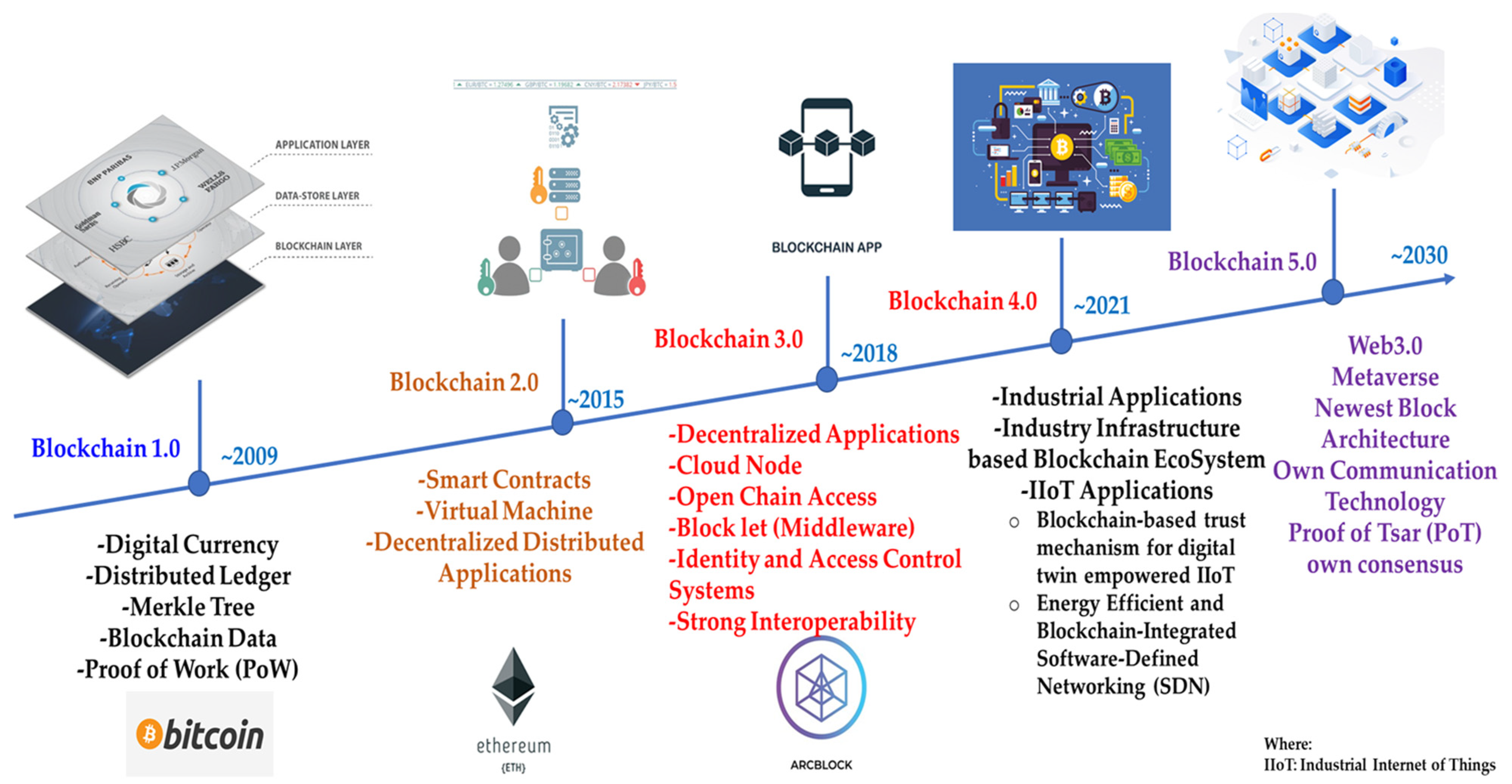


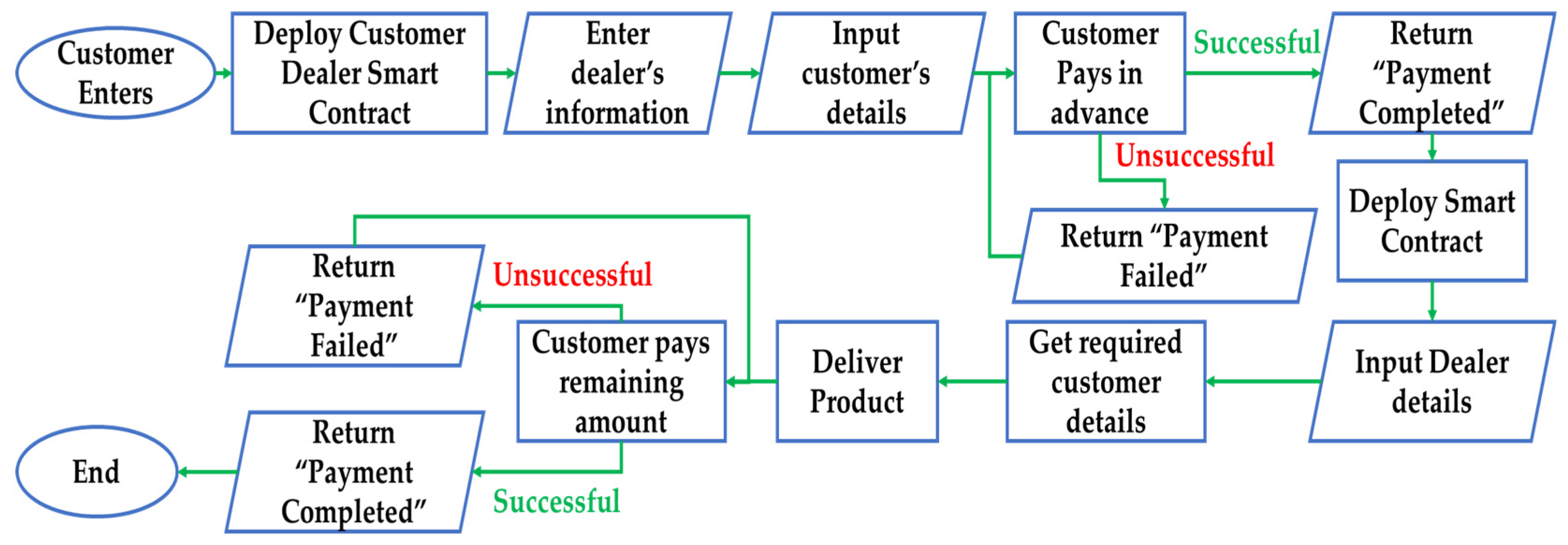
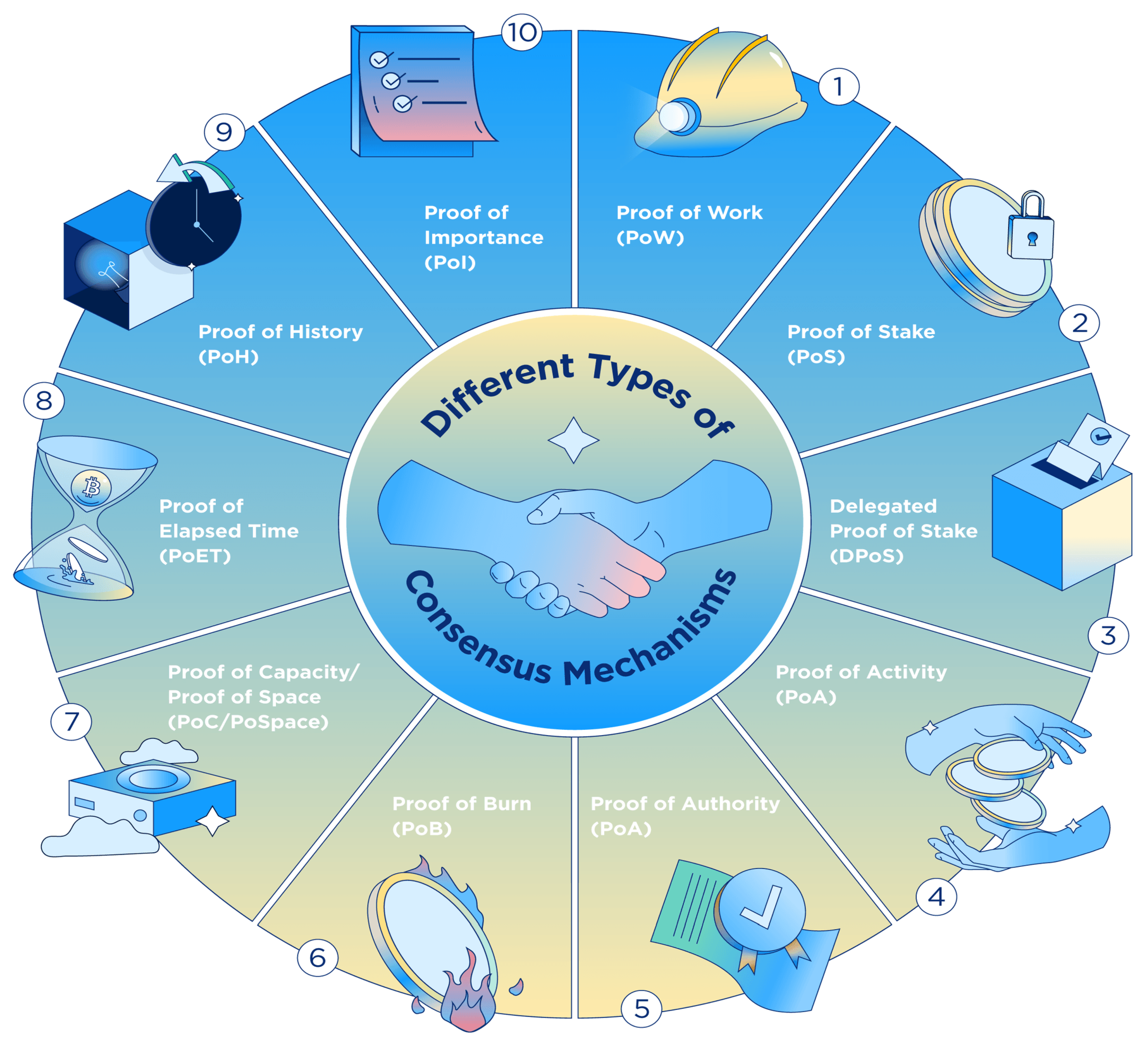
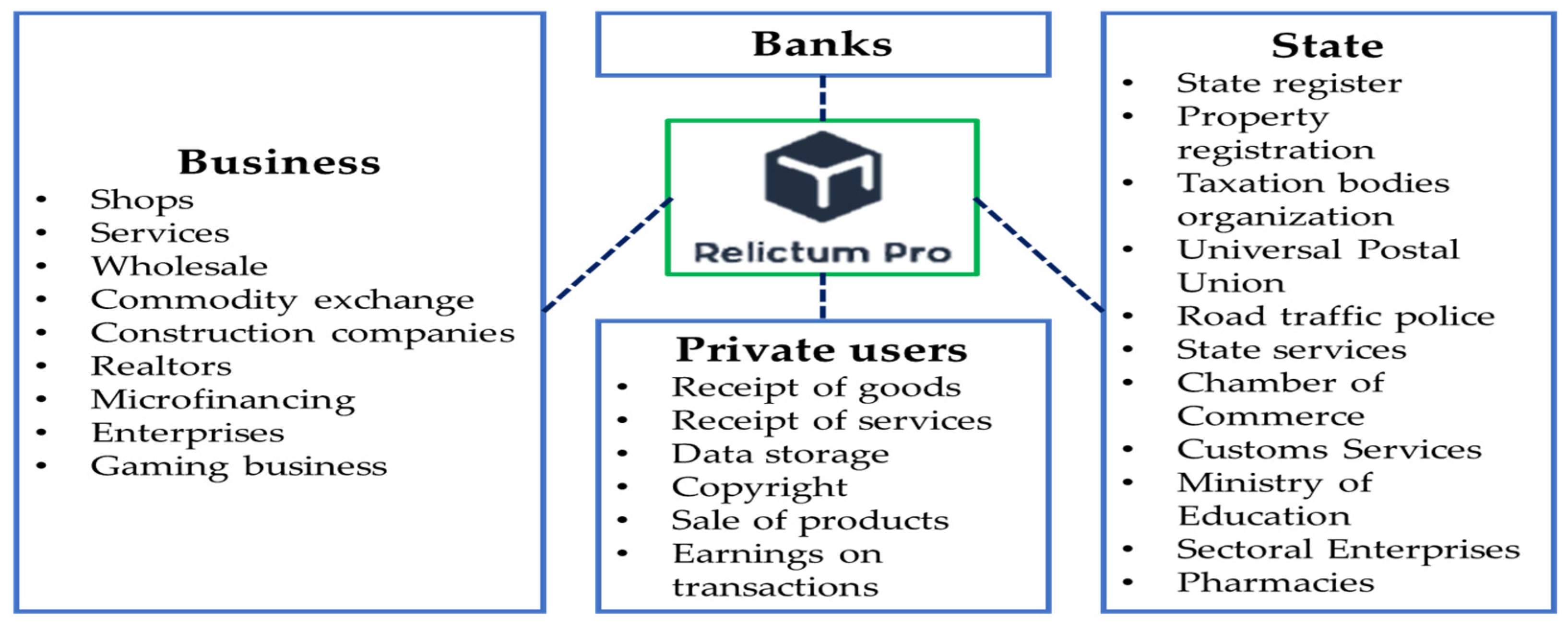
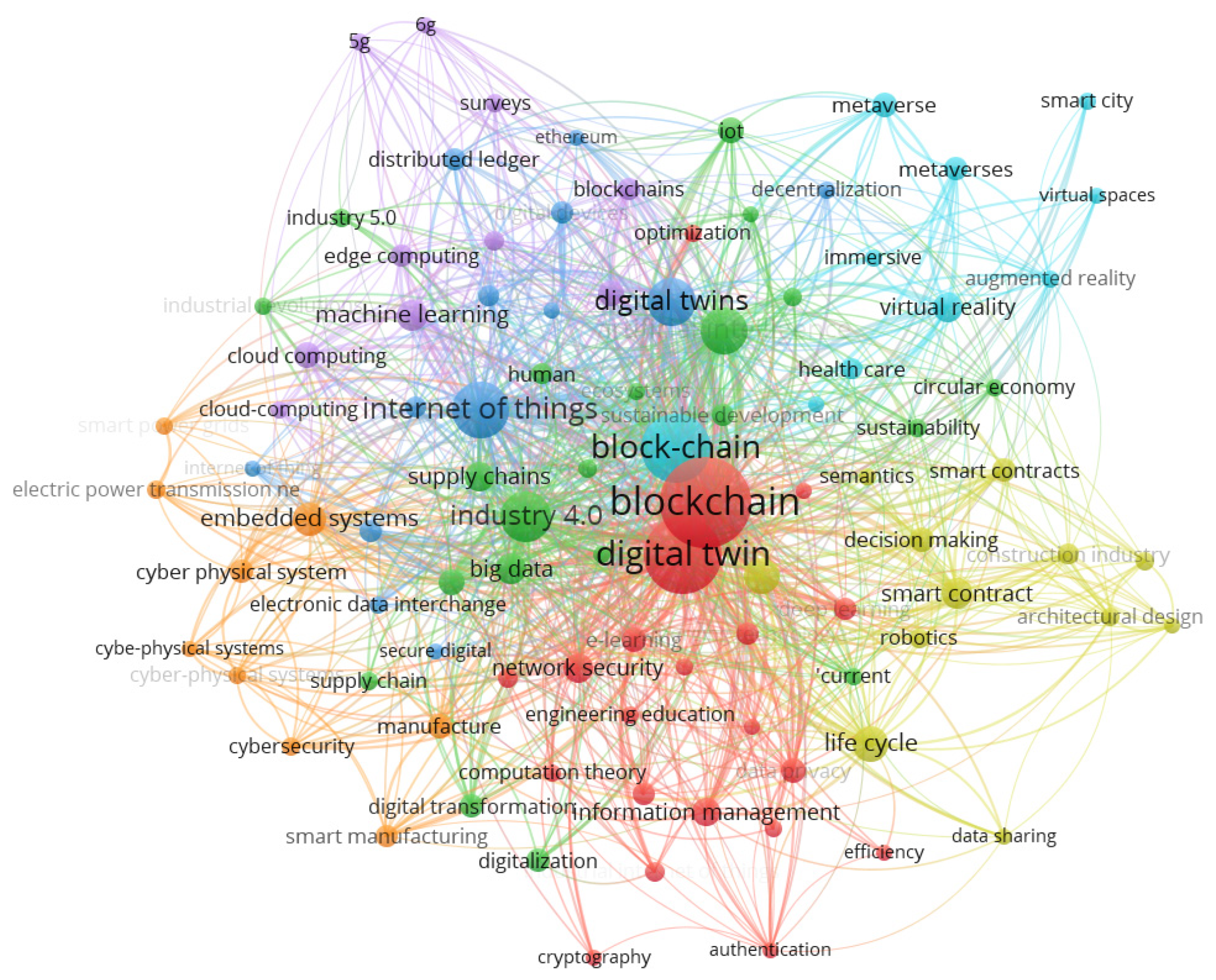
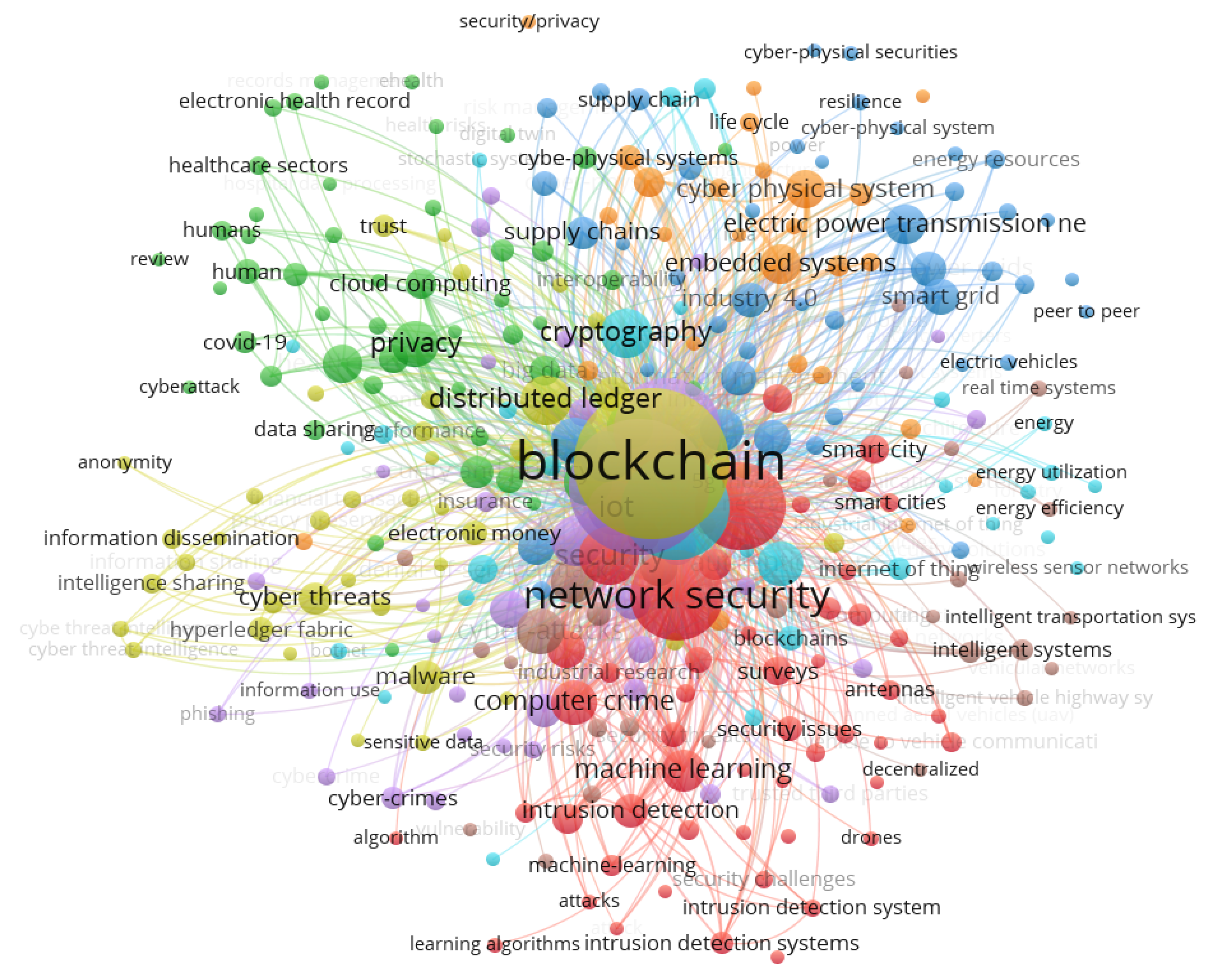
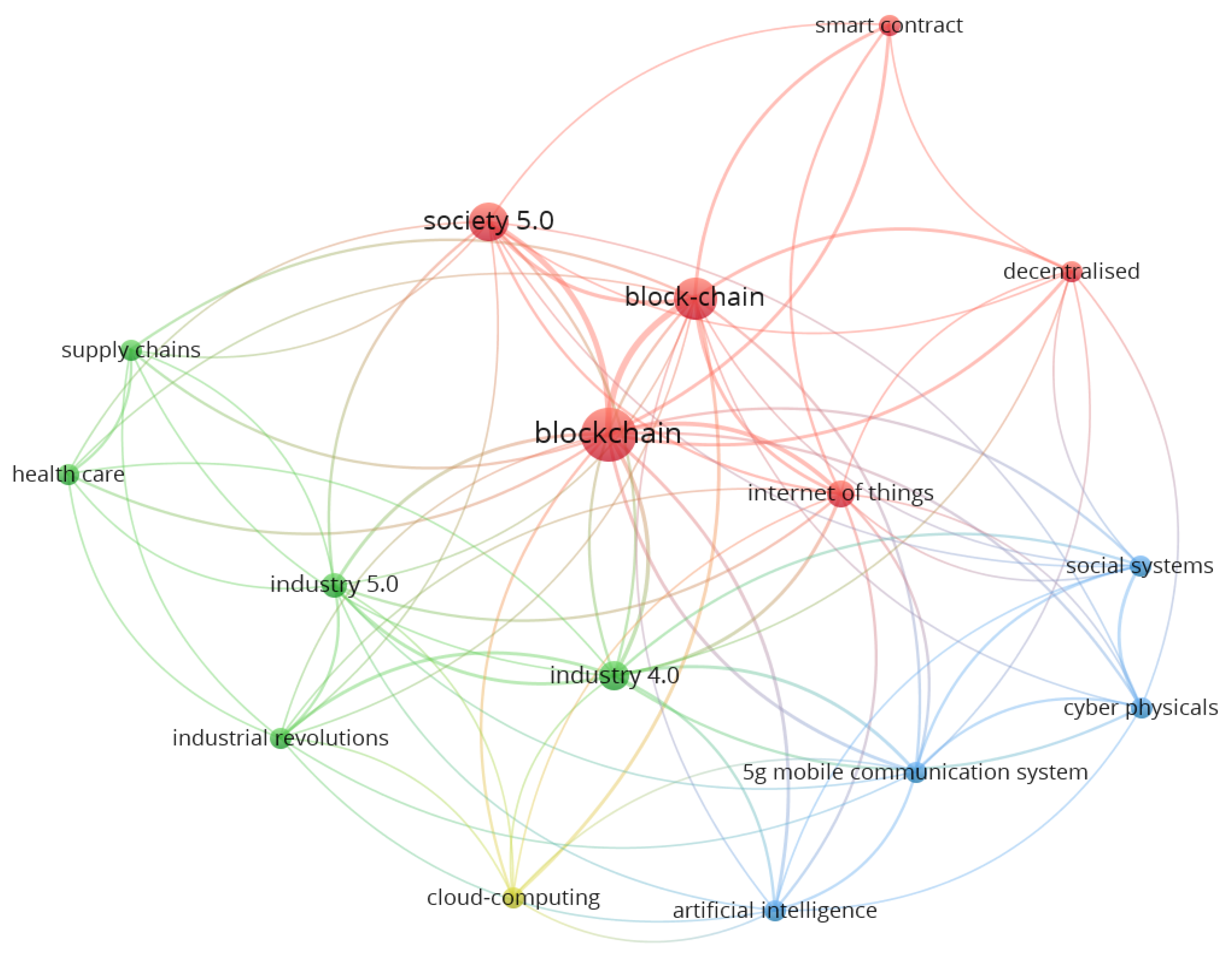

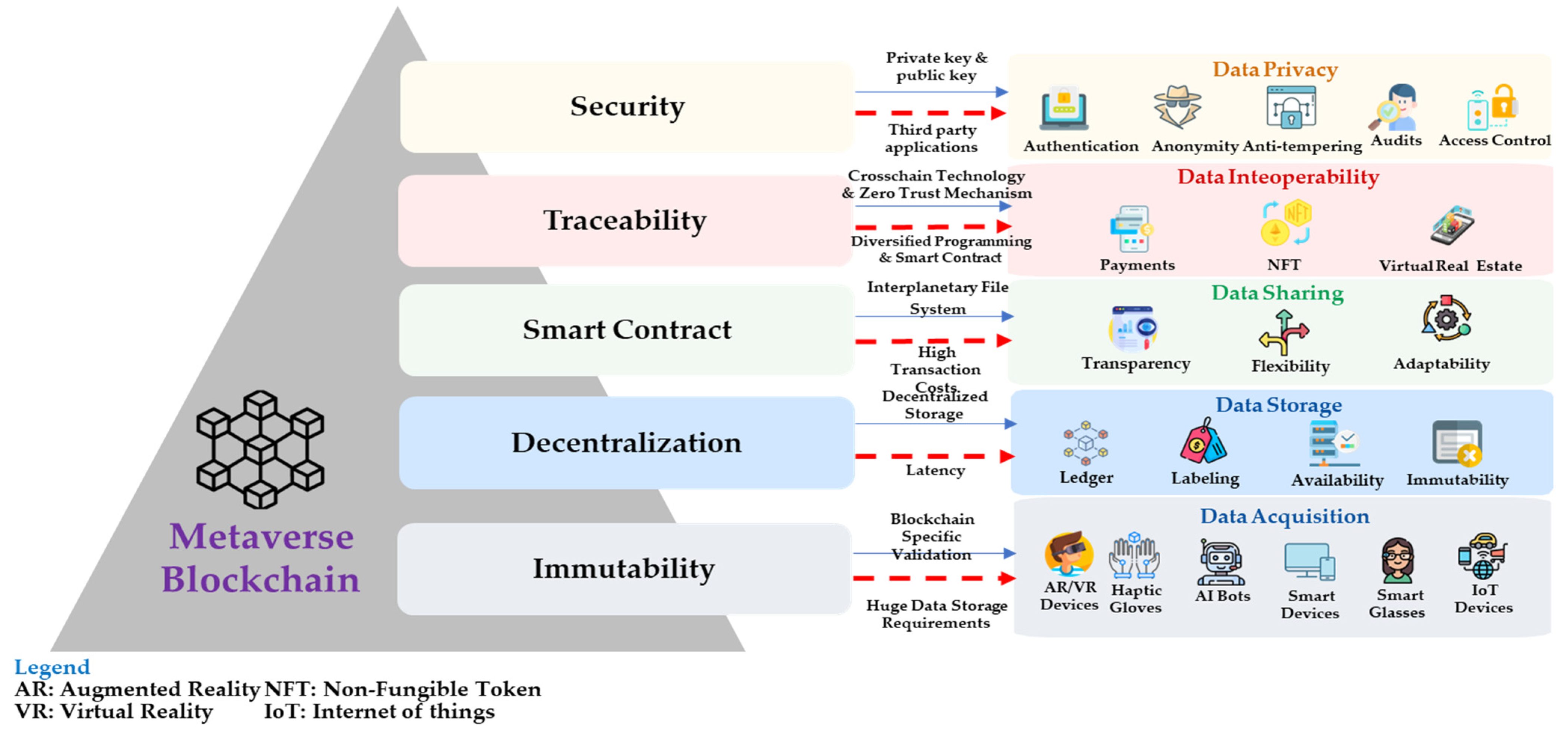
| Parameter | Traditional Contract | Smart Contract |
|---|---|---|
| Documents required | Several legal documents required | None |
| Transaction settlement time | Several hours | ≤60 s |
| Availability | Time-consuming | Easily and readily available |
| Processing method | Manual | Automatic |
| Security | Limited | Cryptographic security |
| Transaction cost | Expensive | Virtually free |
| Signature | Manual | Digital |
| Operation mode | Manual | Automatically triggered |
| Parameter | Blockchain 1.0 | Blockchain 2.0 | Blockchain 3.0 | Blockchain 4.0 |
|---|---|---|---|---|
| Underlying technology | Distributed ledger technology (DLT) | Smart contracts | Decentralized Applications (DApps) | Blockchain with AI |
| Consensus mechanism | Proof of Work | Delegated Proof of Work | Proof of Stake, Proof of Authority | Proof of Integrity |
| Validation | By miners | Through smart contracts and miners | In-built verification mechanism via DApps | Automated verification via sharing |
| Scalability | Non-scalable | Poorly scalable | Scalable | Highly scalable |
| Intercommunication | Not possible | Not possible | Possible | Possible |
| Data rate | 7 TBS | 15 TBS | 1000 s of TBS | 106 TBS |
| Cost | Expensive | Cheaper | More cheaper | Cost effective |
| Energy consumption | Highest | Moderate | Energy efficient | Highly efficient |
| Example | Bitcoin | Ethereum | IOTA, Cardano, Anion | SEELE, Unibright |
| Application | Financial sector | Non-financial sector | Business platforms | Industry 4.0 |
| Case Study | Advantage | Ref. |
|---|---|---|
| Data Sharing | Verify the data review procedure. | [88] |
| A flexible privacy protection system. | [89] | |
| Data Storage | High-efficiency access to data. | [90] |
| Identify and fix the storage capacity issue with the blockchain. | [91] | |
| Virtual Economy Ecosystem | Support anonymous payment. | [92] |
| Assume machine-to-machine (M2M) and Internet of Things (IoT) payments. | [93] | |
| Encourage a transparent environment for system participation. | [94] |
| Topic | Current Paper | [97] | [98] | [58] | [76] | [99] | [100] |
|---|---|---|---|---|---|---|---|
| Blockchain Impact for Metaverse Enablers | X | ||||||
| Technical Perspective of Metaverse | X | X | X | X | |||
| Blockchain as an Enabling Technology for Metaverse | X | X | X | X | X | X | X |
| Applications of Blockchain | X | X | X | X | X | ||
| Timeline of Blockchain Evolution | X | ||||||
| Technical Perspective of Adoptable Blockchain Methods | X | X | X | ||||
| Blockchain for Society 5.0 | X |
Disclaimer/Publisher’s Note: The statements, opinions and data contained in all publications are solely those of the individual author(s) and contributor(s) and not of MDPI and/or the editor(s). MDPI and/or the editor(s) disclaim responsibility for any injury to people or property resulting from any ideas, methods, instructions or products referred to in the content. |
© 2023 by the authors. Licensee MDPI, Basel, Switzerland. This article is an open access article distributed under the terms and conditions of the Creative Commons Attribution (CC BY) license (https://creativecommons.org/licenses/by/4.0/).
Share and Cite
Mourtzis, D.; Angelopoulos, J.; Panopoulos, N. Blockchain Integration in the Era of Industrial Metaverse. Appl. Sci. 2023, 13, 1353. https://doi.org/10.3390/app13031353
Mourtzis D, Angelopoulos J, Panopoulos N. Blockchain Integration in the Era of Industrial Metaverse. Applied Sciences. 2023; 13(3):1353. https://doi.org/10.3390/app13031353
Chicago/Turabian StyleMourtzis, Dimitris, John Angelopoulos, and Nikos Panopoulos. 2023. "Blockchain Integration in the Era of Industrial Metaverse" Applied Sciences 13, no. 3: 1353. https://doi.org/10.3390/app13031353
APA StyleMourtzis, D., Angelopoulos, J., & Panopoulos, N. (2023). Blockchain Integration in the Era of Industrial Metaverse. Applied Sciences, 13(3), 1353. https://doi.org/10.3390/app13031353








